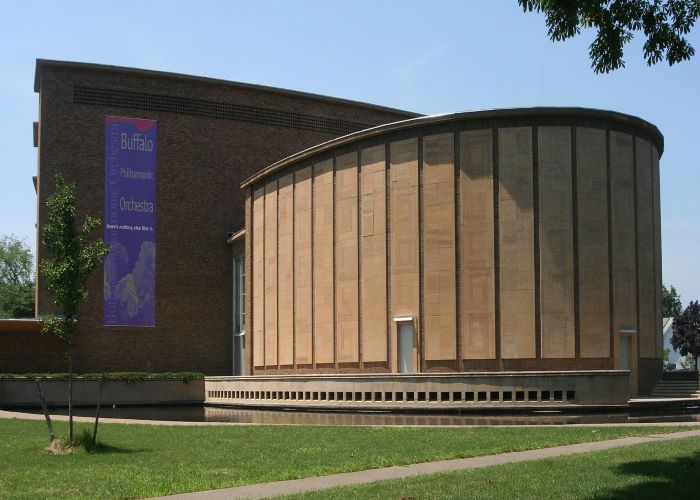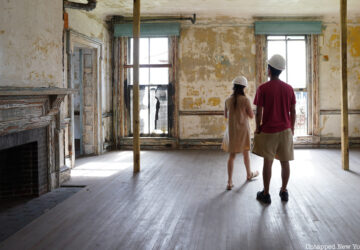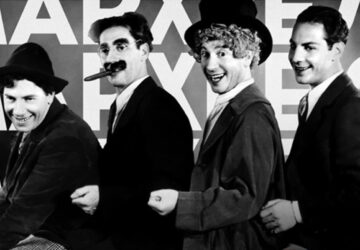6. Kleinhans Music Hall
 Kleinhans Music Hall / Wikimedia Commons by Dave Pape
Kleinhans Music Hall / Wikimedia Commons by Dave Pape
The Kleinhans Music Hall is a concert hall in Buffalo that houses the Buffalo Philharmonic Orchestra. Saarinen designed the building with his father Eliel with help from local architects F. J. and W. A. Kidd. The structure was named by Edward L. Kleinhans, who served as President of a successful men’s clothing company in Buffalo, in honor of his wife, Mary Seaton Kleinhans, and his mother, Mary Livingston Kleinhans.
Kleinhans Music Hall was completed in 1940 and was added to the National Register of Historic Places in 1989. The father-son team aimed to create “an architectural atmosphere… so as to tune the performers and the public alike into a proper mood of performance and receptiveness, respectively.” Built in the International Style, the hall features a main auditorium and the Mary Seaton Room, and the building’s shape suggests that of a violin. The hall is considered one of the most acoustically perfect halls in the world as the hall’s parabolic ceiling enables audience members in back rows to have a clear, instantaneous auditory experience. Kleinhans also had a significant impact on American politics in the 1960s, as Robert F. Kennedy gave a speech at Kleinhans while the Democratic candidate for New York Senator. Additionally, following the 1967 Buffalo race riot, Dr. Martin Luther King gave a speech at Kleinhans titled “The Future of Integration, in which he proclaimed, “We are moving toward the day when we will judge a man by his character and ability instead of by the color of his skin.”





